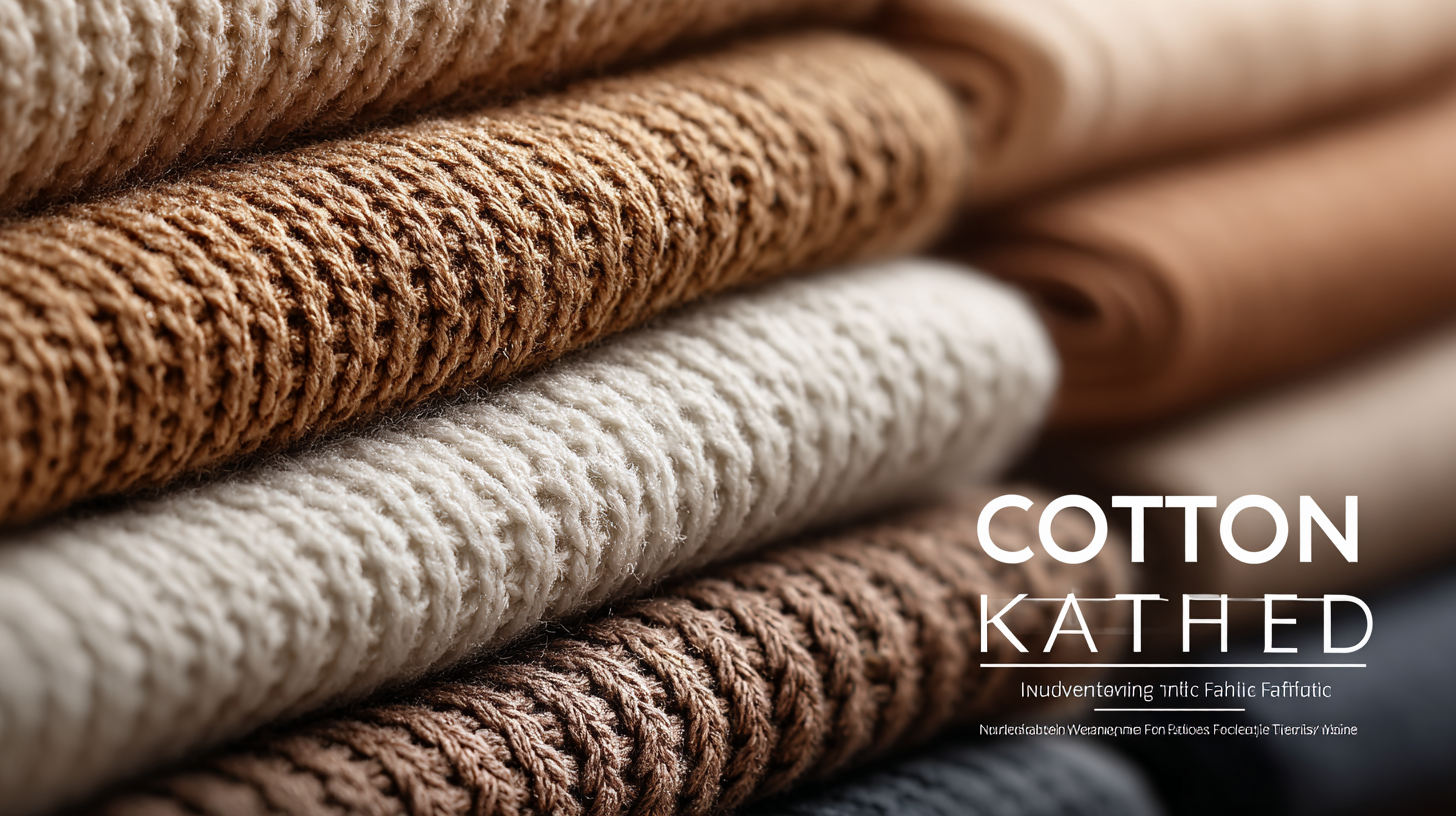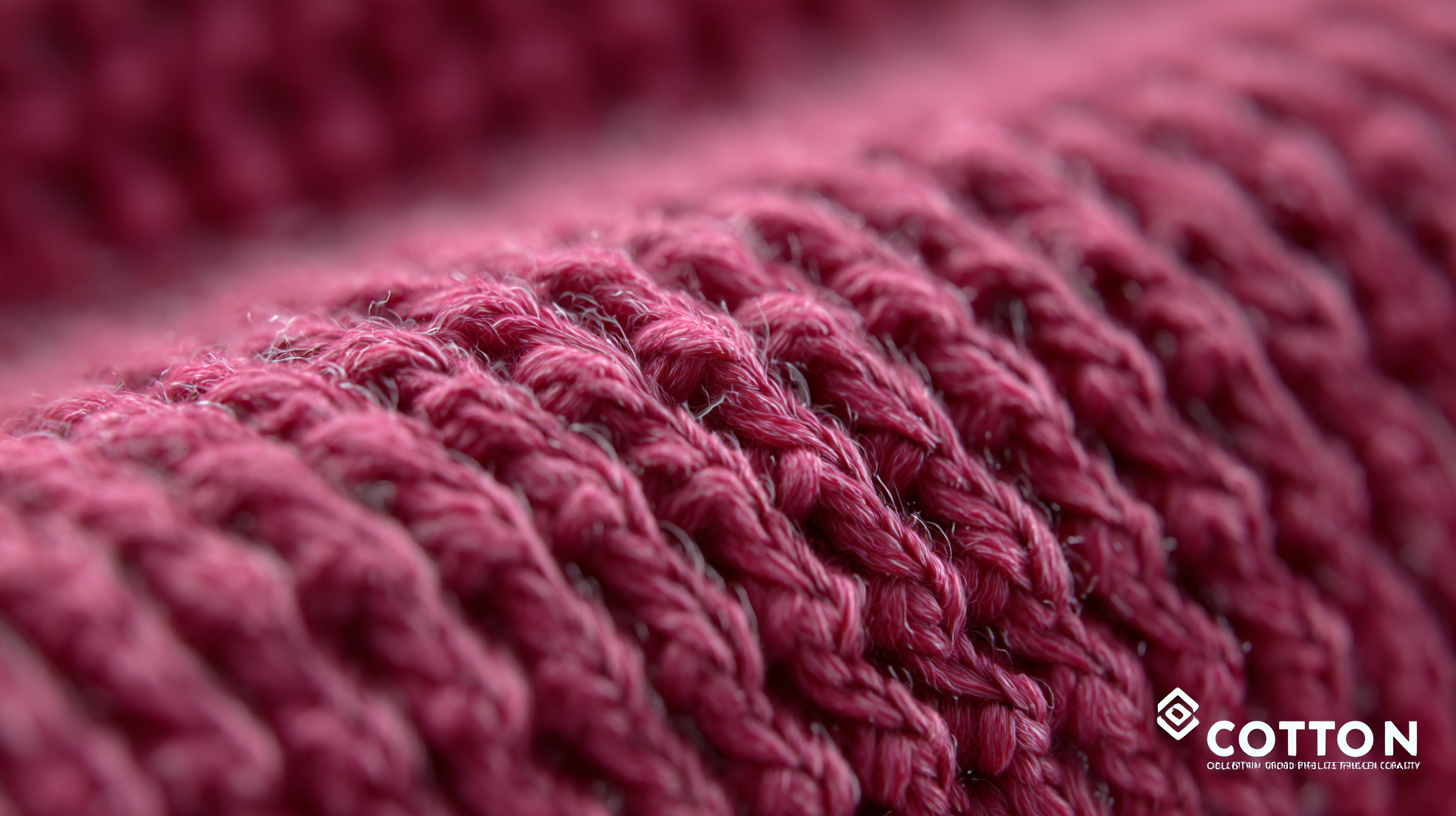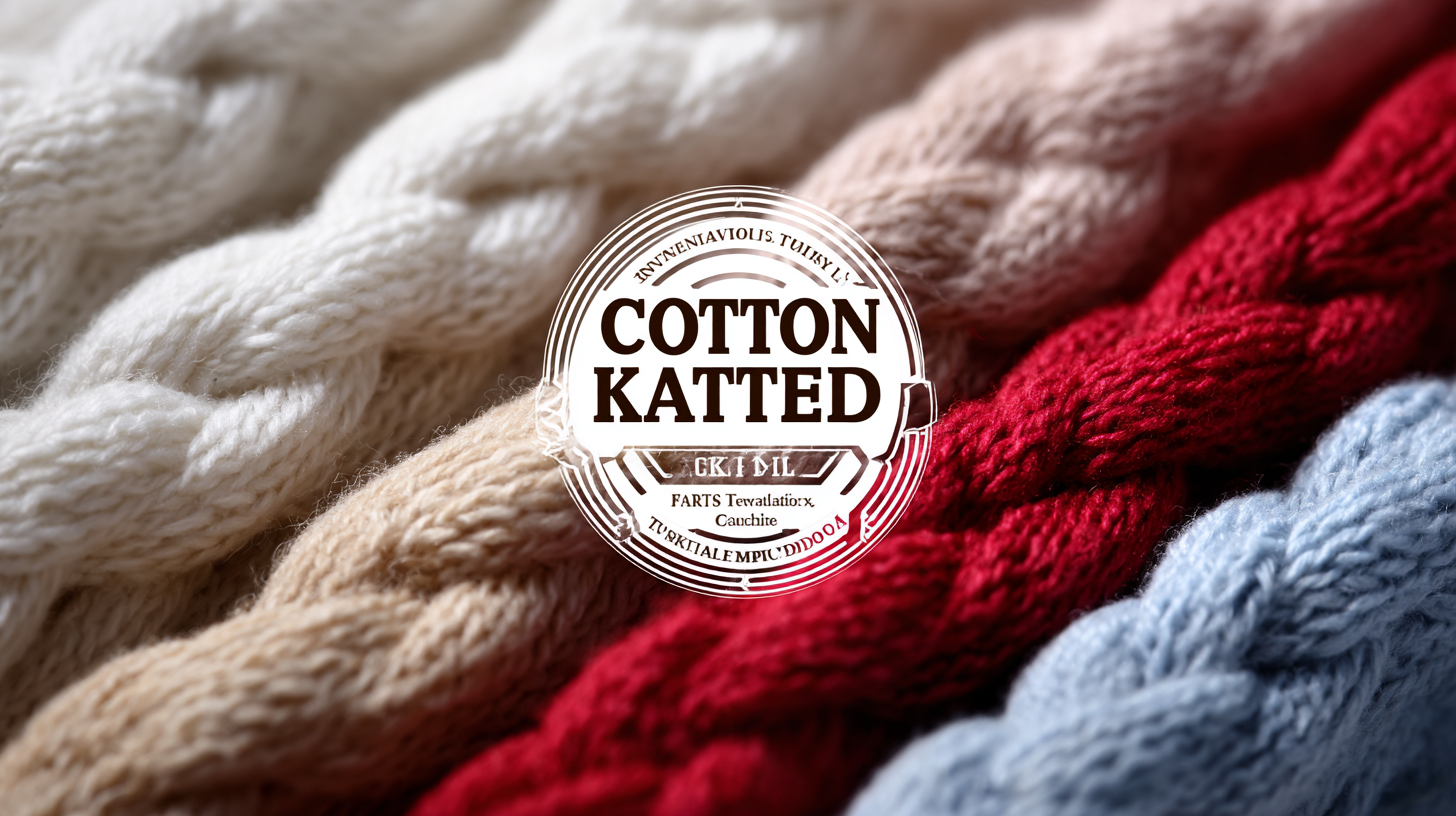In the ever-evolving world of textile technology, 2025 is poised to be a landmark year, especially for enthusiasts of Cotton Knitted Fabric. As innovations continue to shape the industry, this ultimate guide explores how these advancements unlock the myriad benefits of the best cotton knitted fabrics available. From improved sustainability practices to enhanced comfort and durability, the innovations in cotton knitting techniques promise to deliver superior quality that meets modern consumer demands. This guide will delve into the latest trends, technologies, and materials that are revolutionizing our understanding and appreciation of cotton knitted fabrics, offering insights into how these developments can transform your textile experience. Whether you are a designer, manufacturer, or simply a fabric aficionado, understanding these innovations will be key to staying ahead in the textile landscape.

In the realm of textile technology, the importance of quality in cotton knitted fabrics cannot be overstated. As the demand for comfort and durability grows, consumers are increasingly aware of how the fabric they choose impacts their overall experience. Quality cotton knitted fabrics offer numerous benefits, from superior breathability to enhanced elasticity, making them ideal for a wide range of clothing applications. Understanding these advantages is essential for both manufacturers and consumers who seek to make informed choices.
The process of producing high-quality cotton knitted fabrics starts with the selection of premium raw materials. The cultivation of long-staple cotton fibers is crucial, as shorter fibers can lead to pilling and an overall diminished feel. Advanced knitting techniques also play a significant role, allowing for a softer hand feel and improved fit. By prioritizing quality at each step—from sourcing to production—brands can create garments that not only perform better but also provide longer-lasting value, ultimately enhancing customer satisfaction and loyalty in an increasingly competitive market.
This chart illustrates the quality comparison of various cotton knitted fabrics based on the following metrics: softness, durability, breathability, and stretchability. The data is derived from industry standards and provides insight into the benefits of investing in high-quality cotton knitted fabrics.
When searching for reliable cotton fabric suppliers, there are several key criteria to consider that can ensure you choose a partner that aligns with your innovation goals. First, assess the supplier's certifications and compliance with industry standards. Reliable suppliers often possess certifications such as Oeko-Tex or GOTS, which assure that their cotton is organic and free from harmful chemicals. By prioritizing suppliers with these credentials, you can ensure that the fabric you are sourcing is not only of high quality but also environmentally friendly.
Another crucial criterion is the supplier's production capacity and lead time. In today's fast-paced market, the ability to meet high demands without sacrificing quality is essential. Establishing a clear understanding of their production capabilities will help you gauge if they can deliver on time, especially for large orders or tight deadlines. Additionally, it’s beneficial to check client testimonials and existing partnerships; a supplier with a history of satisfied customers is likely to provide a reliable experience. By focusing on these key criteria, you can make informed decisions that will enhance your textile innovation journey.
Evaluating supplier certifications and manufacturing processes is crucial for ensuring the quality and sustainability of cotton knitted fabrics. In 2025, as the textile industry shifts towards more innovative and eco-friendly practices, attention to certifications such as OEKO-TEX® and GOTS (Global Organic Textile Standard) will be paramount. These certifications not only guarantee that the materials used in fabric production meet stringent ecological and safety standards but also promote fair trade practices and improved working conditions for laborers.
Moreover, understanding the manufacturing processes behind cotton knitted fabric is essential for brands aiming to market high-quality products. Techniques like circular knitting and seamless construction offer superior durability and comfort, while also reducing waste through more efficient resource use. By partnering with suppliers who prioritize transparent practices and modern technology, companies can unlock the full potential of cotton fabrics, creating innovative textiles that align with consumer demand for both quality and sustainability. In this ever-evolving landscape, the focus on supplier certifications combined with advanced manufacturing will be key to driving the future of textile technology.
| Supplier Location | Certification Type | Fabric Composition | Manufacturing Process | Sustainability Rating |
|---|---|---|---|---|
| India | GOTS | 100% Organic Cotton | Knitting | A+ |
| Turkey | OEKO-TEX | Cotton Blend | Circular Knitting | A |
| USA | B Corporation | Pima Cotton | Warp Knitting | A++ |
| China | IS014001 | Cotton Modal | Flat Knitting | B+ |
| Bangladesh | WRAP | Stretch Cotton | Seamless Knitting | B |
The textile industry is witnessing a transformative shift towards sustainability, particularly in cotton fabric sourcing. According to the Textile Exchange's 2021 report, organic cotton production grew by 38% from the previous year, highlighting a significant move towards eco-friendly practices. As consumers increasingly prioritize sustainability, brands are adopting practices that not only minimize environmental impact but also improve the quality and durability of cotton fabrics. Using organic cotton has been shown to require 91% less water than conventional cotton, making it a crucial player in water conservation efforts.

When sourcing cotton, manufacturers can implement sustainable practices such as integrated pest management and organic farming techniques. These methods not only reduce reliance on harmful chemicals but also enhance soil health, leading to more resilient crops. Additionally, utilizing local sourcing can lower transportation emissions and support local economies.
Tips for brands include prioritizing certifications like OEKO-TEX or GOTS to ensure ethical sourcing, and actively participating in initiatives aimed at sustainable practices. Consumers should also be encouraged to seek out brands that transparently communicate their sustainability efforts, as this fuels the demand for responsibly sourced cotton fabrics. Adopting these practices will not only benefit the environment but also align with the growing consumer sentiment towards sustainability in textile technology.
 Building strong, long-term relationships with textile suppliers is essential for success in the evolving world of textile technology. As we look ahead to the innovations of 2025, particularly in cotton knitted fabric, fostering these connections will ensure access to high-quality materials and cutting-edge techniques. Suppliers who are engaged partners can provide insights into the latest trends, materials, and production methods, enabling companies to remain competitive and responsive to market demands.
Building strong, long-term relationships with textile suppliers is essential for success in the evolving world of textile technology. As we look ahead to the innovations of 2025, particularly in cotton knitted fabric, fostering these connections will ensure access to high-quality materials and cutting-edge techniques. Suppliers who are engaged partners can provide insights into the latest trends, materials, and production methods, enabling companies to remain competitive and responsive to market demands.
Moreover, collaboration with suppliers opens doors to sustainable practices and innovation. By working closely with them, businesses can explore eco-friendly alternatives and advanced technologies that can enhance the performance of cotton knitted fabrics. These partnerships not only streamline production processes but also create a synergy that drives continuous improvement, making it easier to adapt to changing consumer preferences. As we embrace the future of textile technology, investing in supplier relationships will be a key strategy for harnessing the full potential of premium cotton fabrics in a competitive market.